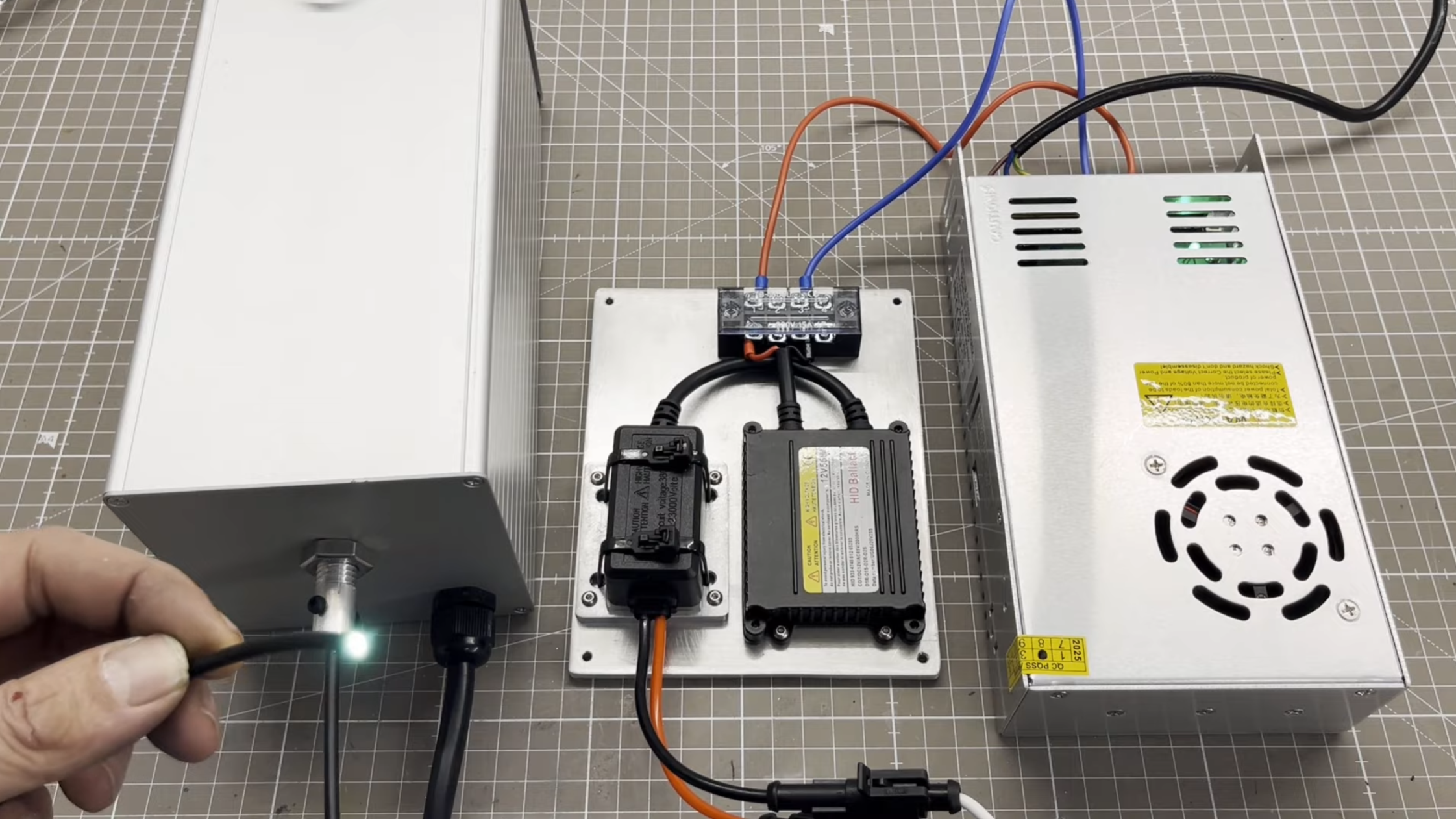Building a functional xenon lamp for spectroscopy is the latest project undertaken by amateur innovator Markus Bindhammer. This new light source aims to enhance the calibration process for spectrometers, which is essential for accurately identifying wavelengths. By utilizing a xenon bulb, Bindhammer hopes to provide a broader spectrum of light that can prove beneficial for various spectroscopic applications.
To effectively calibrate a spectrometer, it is crucial to detect characteristic peaks or dips in a light source. Traditionally, hobbyists rely on the well-known peaks produced by a mercury-vapor fluorescent light. However, a xenon gas discharge offers a more versatile option. It generates a wide range of wavelengths, making it particularly useful for absorbance spectroscopy. In his latest project, Bindhammer used an H7 xenon bulb designed for vehicle headlights.
Innovative Design for Enhanced Performance
The design of Bindhammer’s light source features a thoughtful arrangement of components. The xenon bulb is positioned at the center of the assembly, flanked by a concave mirror made from a cut-open section of an aluminum pipe. This mirror serves to direct the light effectively. In front of the bulb, a pair of converging lenses focuses the emitted light onto the end of an optical cable made of PMMA, a material known for its excellent transmission of ultraviolet light.
The entire setup is securely held in place with aluminum brackets. To facilitate cooling, a fan is installed on one end of the aluminum case that houses the entire assembly. This design also includes a light trap covering the fan outlet to prevent stray light from compromising the measurements. Although Bindhammer has yet to test the light source with his custom spectrometer, initial observations indicate that it should function effectively.
Exploring the Potential of Xenon Light Sources
The construction of this xenon lamp highlights a growing interest in amateur spectrometry, where enthusiasts explore and create their own devices to enhance scientific inquiry. While there are numerous amateur spectrometers available, Bindhammer’s project sets a precedent for examining commercial scientific light sources. The ability to generate multiple characteristic spikes in both visible and infrared regions expands the potential applications for spectroscopy, allowing for more detailed analyses in various fields.
As this innovative project progresses, it may pave the way for further developments in the realm of spectroscopy, encouraging more hobbyists and professionals alike to explore the possibilities of custom-built light sources. The intersection of creativity and science continues to inspire individuals to push the boundaries of traditional methodologies, fostering a vibrant community of enthusiasts eager to contribute to the scientific landscape.







































































